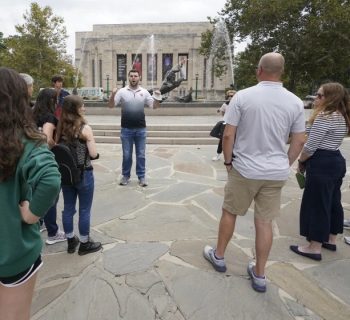Despite nominal support for transfers from lawmakers and university officials, transferring to four-year state schools is an unrealized goal for too many.
Opinion & Photo by The San Diego Union-Tribune Editorial Board | JUL. 30, 2023
With 1.8 million students at its 116 campuses, the California Community College system is the nation’s largest higher-education institution. Its low cost and ease of enrollment make it the single best way for a wide range of students of all ages in the Golden State to get the education and training they need to build successful lives and better communities. Helping California Community College students with solid records to realize their goals by simplifying transfers to California State University and University of California campuses should be something everyone in state government can agree on.
This isn’t just the case because of the value of promoting economic mobility through higher education. Students taking classes, often remedial in nature, that don’t get them closer to two-year degrees or offer any help in getting them to four-year schools is a resource-devouring problem at community colleges. This inefficient waste of taxpayer dollars was targeted — with limited success — by a law the Legislature passed unanimously in 2017. In general, California Community College students transferring to CSU or UC schools need at least 60 credits. Yet according to the Campaign for College Opportunity, transfers average having around 90 credits.
Sadly, no consequential reforms have resulted from the rhetorical support for making the transfer process much easier that’s long been offered by governors, state legislators, and CSU and UC leaders and board trustees. “I’ve never heard anyone say, ‘I don’t want to improve transfer,’” former California Community College President Eloy Ortiz Oakley told EdSource in May. “But yet here we are.”
Many of the obstacles are obvious and long-standing and stem from the autonomy each college has on key issues. Transfer acceptance policies vary, sometimes widely, depending on which of the 23 CSU or nine UC schools that a community college student hopes to attend.
Ginni May, president of the California Community College’s Academic Senate, has characterized the issue as “116 campuses trying to meet the requirements of 32 campuses.” But that too readily absolves community colleges of their role in the problem. Many have two-year associate degree requirements that mandate taking classes that don’t transfer. Yet May’s point gets to the lack of clarity about the transfer process. When community college students report being told one thing by one counselor and another by a second counselor, it’s often because there is no central clearinghouse of information — and some information at the websites of CSU and UC campuses is outdated and unreliable.
So why isn’t this basic problem being addressed? Sure, it’s complex and a solution would require hard work. But it’s also because CCC, CSU and UC all resist changes that would limit their self-governance and could affect their perceived status. If community colleges tailored degree requirements to CSU and UC expectations, that can be seen as diminishing the value and point of obtaining two-year degrees. And at UC campuses and the most accomplished CSU branches — including San Diego State — there may be the perspective that what some see as a problem actually serves a purpose: keeping out students seen as marginal by administrators determined to protect their institutions’ reputations. In an interview with an editorial writer, San Diego City College President Ricky Shabazz called it “an unfortunate reality” that so many universities pay such close attention to their rankings by U.S. News and World Report and other outlets that compile guides for potential students to consult.
Also, it may be impossible to create a clear, uniform path to transfer from two-year state schools to four-year state schools at UC, which is guaranteed autonomy in the state Constitution. From 2012 to 2015, the money-hungry UC system thumbed its nose at Gov. Jerry Brown and the Legislature by lowering the admission standards for international students who paid far higher tuition, leading to an influx of such students that took away as many as 16,000 spots from in-state students.
But Gov. Gavin Newsom and legislative leaders should do what they can to make this path more predictable and navigable. A 2021 study found that only 23 percent of state community college students who wanted to transfer to a four-year school — who saw such a move as crucial to bettering their lives — were able to do so within four or fewer years. For a state that prides itself on its progressive values and its commitment to helping the disadvantaged, the underprivileged and the low-income, this record is shameful — and should be unacceptable.







